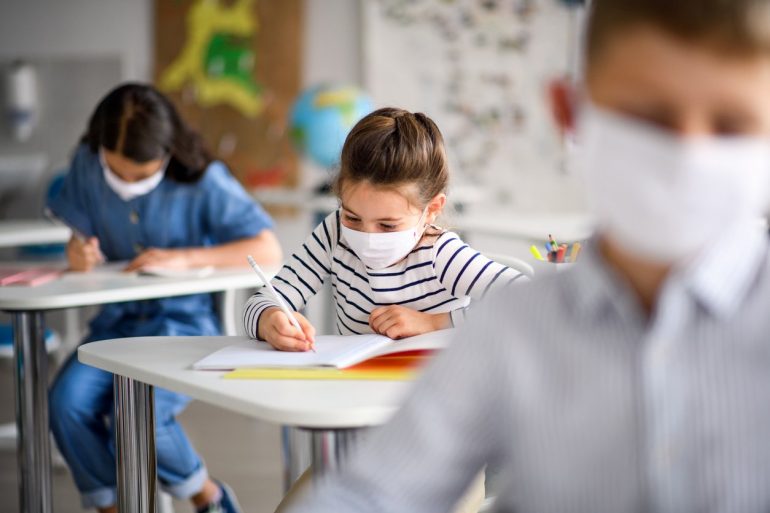Although students in kindergarten to high school (four to 18 years old) can catch the coronavirus, most do not develop symptoms of coronavirus. Covid-19 or they pass the disease mildly. Although they are considered less vulnerable to SARS-CoV-2 infection than adults, they probably transmit it to a similar degree, according to the general picture that scientists have formed so far.
As restrictions have been largely lifted in most countries, infections in children and adolescents are growing faster than in other age groups, say three US scientists in an interview with the leading scientific journal Science.
Gareth Fitzgerald, Tilo Grosser, and Ronan Lordan, professors and researchers at the University of Pennsylvania School of Medicine, point out that, to date, infections are usually introduced to schools by the community, and further transmission is within the schools themselves. rarely, when the safety and protection measures, which prevent the spread of the virus among students and teachers, are meticulously observed. Occasionally more cases in schools are usually associated with increased transmission of the coronavirus to the wider community, insufficient distance keeping, poor ventilation of classrooms and non-use of masks by students and teachers.
The main conclusion so far from schools in the US and Europe is that what the measures have implemented has not contributed significantly to the increased circulation of the virus in local communities. With this in mind, the three American scientists highlight three issues of focus on school opening:
1. Minimize infections entering schools from outside: This primarily means carefully monitoring children for symptoms, so that a diagnostic test can follow. But it is certain that many infections are silent. Large percentages of people (15% to 50% of children and 10% to 30% of adults) will either be asymptomatic carriers as their immune system successfully fights the coronavirus, or will be pre-symptomatic, meaning they will show symptoms later, but transmit especially the virus one to three days before the onset of the first symptoms. Today's molecular tests can not "silently" catch silent infections absolutely reliably. Therefore, according to the three scientists, the most effective way to minimize the risk of getting infections in school is to limit lifelong learning, while infections in the local community are under control, with less than 30 to 50 new cases per 100.000 inhabitants per week (eg for Greece this means less than 3.000 to 5.000 cases per week, which is the case today). Countries that have decided to open schools without requiring the use of a mask in the classroom, but only in the hallways, usually have almost zero transmission of the virus to the community.
2. Minimizing the further transmission of the coronavirus after its penetration into the school: The Covid-19 spreads through infected particles containing the virus and is released during respiration, speech, voices, songs, coughing and sneezing. Because the smaller droplets stay in the air for a long time, in order to limit the transmission of the virus, it is not enough to keep the distance between students and teachers, but it also takes less time for someone to be exposed to the virus. This practically means time limitation of staying in the same space, avoiding activities such as songs, improving the ventilation of the spaces and systematic use of the mask. Although the virus is less likely to be transmitted outdoors, sports activities that involve close contact and exposure to the exhalation of others should be avoided.
3. To avoid a series of cases in a school, the secondary transmission to the smallest possible number of people should be minimized: This means relative isolation of the individual groups (eg classes) of the school community among themselves, which will reduce the number of potentially dangerous interpersonal contacts and will facilitate tracking if a case is diagnosed. In such a case, quarantine measures will be limited to the specific group (eg class) and not to the whole school. Early detection of students or teachers who have been infected with the virus is important in this case.
Finally, the more the wider community takes care to prevent the transmission of the coronavirus through restrictive measures to other social gatherings, the safer the school will be for children, according to the three American scientists.
Source: RES-EAP
